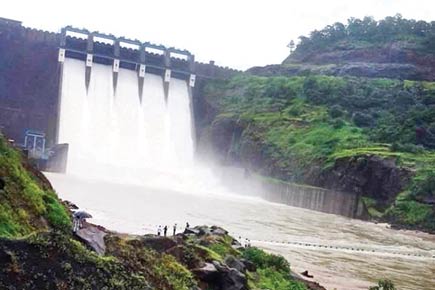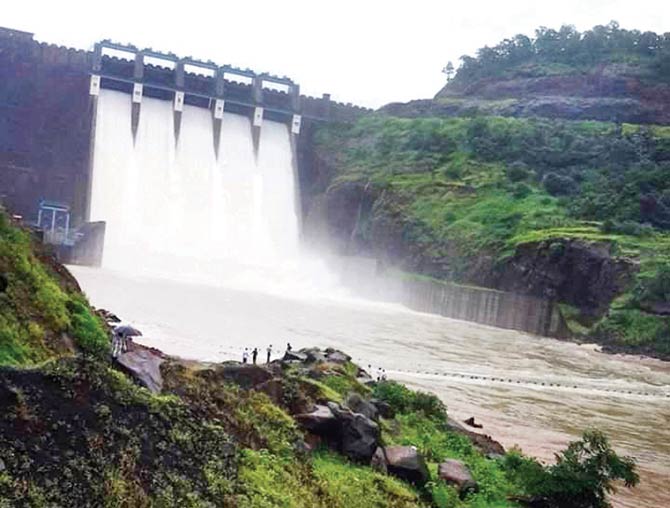The monsoon in Maharashtra generally gets over by September and according to the Maharashtra Economic Survey, tabled in the legislature on Wednesday, the state received only 84 per cent of its average rainfall last year


ADVERTISEMENT
Dams in Maharashtra have more than 50 per cent water stock of their capacity, which is 5 per cent higher compared to the corresponding six-month period last year, a water resources department official has said. "Dams in the state have 508.19 TMC water as on today (October 2017 to March 10, 2018), which is 50.18 per cent (of their capacity). There are 3,246 dams of various sizes in the state and they have a total water storage of 1,338 TMC (thousand million cubic feet)," he said.
The monsoon in Maharashtra generally gets over by September and according to the Maharashtra Economic Survey, tabled in the legislature on Wednesday, the state received only 84 per cent of its average rainfall last year. "On March 10 last year, the total water stock in dams was 44.56 per cent," the official said. "There was a good spell of showers over Marathwada in September which helped the dams in the region to have a good storage of water for the remaining year," he said. Power Minister Chandrashekhar Bavankule said, "We have kept our focus on thermal power generation more than hydro- electric units set up at dam sites. "The Koyna dam in Satara district alone has a capacity of generating around 2,000 MW power. We managed to save water for summer season and this will help in overcoming any shortage and we can generate power from it." The only challenge before the water resources department is the Vidarbha region in east Maharashtra. "By the end of monsoon in 2017, the Nagpur revenue division had 47.32 per cent water stock of their capacity, while Amravati had 83.28 per cent.
"Today, the water level has shrunk to 19.86 per cent in the Nagpur division and 19.40 per cent in the Amravati division (both part of Vidarbha). "The water stock in the corresponding date of previous year was 37.79 per cent for the Amravati division and 21.78 per cent for the Nagpur division," officials said. Compared to these regions, central Maharashtra is placed comfortably. "The dams in Pune and Nashik revenue divisions had 89.27 per cent and 81.93 per cent water stock of their capacity, respectively, at the end of the monsoon season. "The water level has now come down to 55.63 per cent in the Nashik division and 64.20 per cent in the Pune division.
Compared to other divisions, Pune and Nashik are comfortably placed," they said. The dams in the Konkan region, which receives the maximum rainfall in the state, currently have 59.42 per cent water stock of their capacity. In March last year, the dams in the coastal region had 63.38 water stock of their capacity.
Catch up on all the latest Mumbai news, crime news, current affairs, and also a complete guide on Mumbai from food to things to do and events across the city here. Also download the new mid-day Android and iOS apps to get latest updates
This story has been sourced from a third party syndicated feed, agencies. Mid-day accepts no responsibility or liability for its dependability, trustworthiness, reliability and data of the text. Mid-day management/mid-day.com reserves the sole right to alter, delete or remove (without notice) the content in its absolute discretion for any reason whatsoever
 Subscribe today by clicking the link and stay updated with the latest news!" Click here!
Subscribe today by clicking the link and stay updated with the latest news!" Click here!






